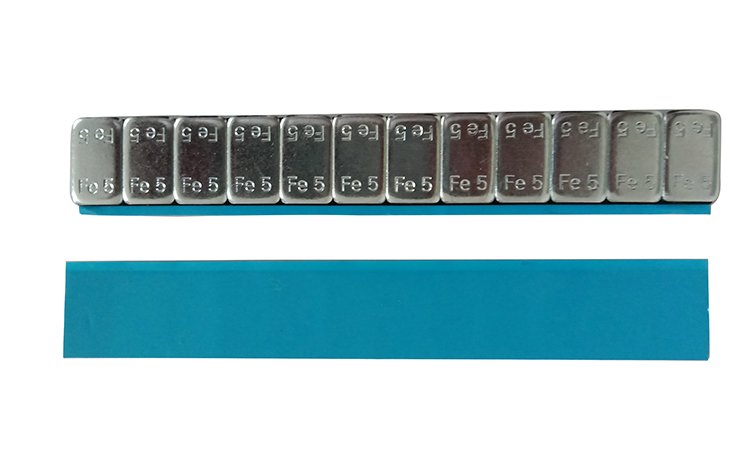Comparison of Three Surface Treatment Methods for Wheel Weight
The wheel weights is a counterweight component installed on the wheels of a vehicle. During the production process of the wheel weights, surface treatment can improve its corrosion resistance, wear resistance, and aesthetics. The following is a comparison of three surface treatment processes: electroplating, epoxy resin spraying, and Dacromet. You can compare them and choose the appropriate surface treatment for yourself:
1. Electrogalvanizing

Advantages
①Good corrosion resistance: Electrogalvanizing can form a layer of zinc, providing good anti-corrosion protection for the wheel balance weights.
②Relatively low cost: Electroplating is a mature process with relatively low equipment and operating costs.
Disadvantages
①Limited coating thickness: The thickness of the electroplated zinc coating is usually thin and may not provide long-term high anti-corrosion performance.
②The appearance may not be ideal: the appearance of electroplated zinc may not be as smooth and bright as other surface treatment processes.
2. Epoxy resin spraying

Advantages
①Excellent anti-corrosion performance: Epoxy resin spraying can form a strong coating, providing excellent anti-corrosion protection.
②Good adhesion: Epoxy resin can form a strong bond with the wheel weight substrate, improving the durability of the coating.
③Multiple color options available: The spraying process can achieve coatings of multiple colors to meet different aesthetic needs.
Disadvantages
①Relatively high cost: Compared to electrogalvanizing, the equipment and material costs for epoxy resin spraying may be higher.
②Possible environmental pollution: During the spraying process, exhaust gas and waste liquid may be generated, requiring appropriate environmental treatment.
3. Dacromet
Advantages
①Extremely strong corrosion resistance: The Dacromet coating has excellent corrosion resistance and can withstand harsh environmental conditions.
②No risk of hydrogen embrittlement: Dacromet treatment does not cause hydrogen embrittlement issues and is suitable for surface treatment of high-strength steel.
③Uniform coating thickness: Dacromet coating can form a uniform thickness, ensuring consistent anti-corrosion performance.
Disadvantages
①High cost: The equipment and material costs of Dacromet are relatively high, which may limit its use in some applications.
②Complex process: The Dacromet treatment process is relatively complex and requires strict control of treatment parameters to ensure coating quality.
In summary, each surface treatment process has its own advantages and disadvantages. Electrogalvanizing has low cost but limited anti-corrosion performance; Epoxy resin spraying provides good corrosion resistance and appearance, but the cost is relatively high; Dacromet has extremely strong corrosion resistance, but the cost is also high and the process is complex. When choosing a surface treatment process, it is necessary to comprehensively consider the usage environment, cost budget, and requirements for appearance and anti-corrosion performance of the wheel weights.
